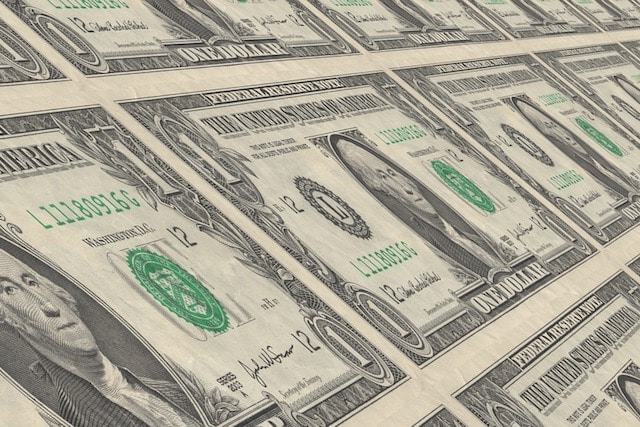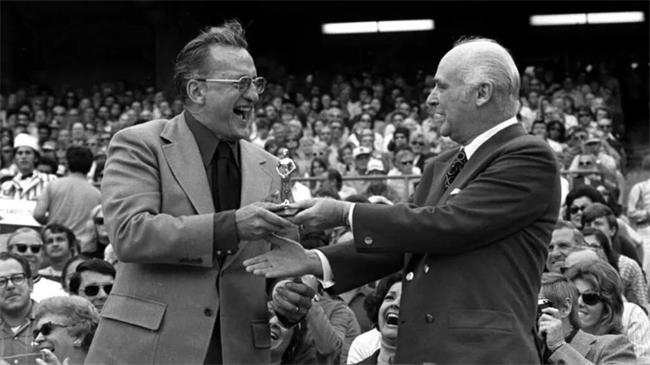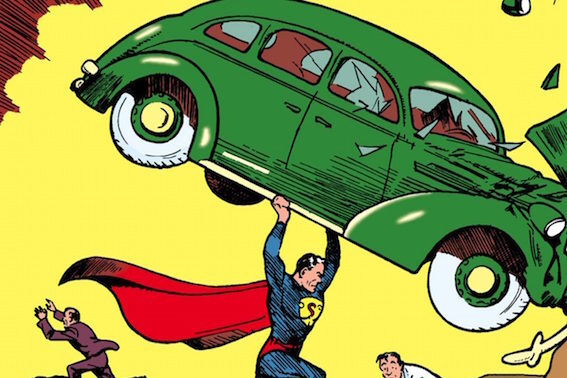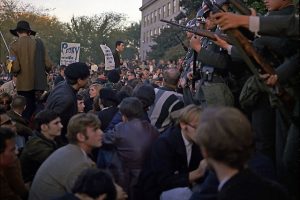10 Incredible Items That Were Sold for Just One Dollar
We hear it all the time: “A dollar just doesn’t go as far as it used to.” And honestly, it’s hard to argue. Prices keep creeping up—whether it’s groceries, gas, or even your favorite streaming service—and it often feels like a single dollar is barely worth the paper it’s printed on. But here’s where it gets interesting: that humble buck wasn’t always this powerless. In fact, there have been moments in history where one dollar could get you something downright astonishing.
Think about it—full meals, luxury services, iconic collectibles, even land in some cases. The value of a dollar has had its ups and downs, sure, but what’s wild is how some of those one-dollar deals seem almost too good to be true by today’s standards. It’s not just nostalgia—it’s a reminder of how unpredictable value can be over time, and just how strange economic history can get.
Want a peek at some of the most unbelievable things ever sold for $1? You might be surprised at what made the list.
10. Coca-Cola Once Gave Away Billions—For Just $1

It’s hard to imagine a world without Coca-Cola. With nearly 2 billion servings sold every single day, it’s one of the most recognized and consumed beverages on the planet. The math is wild—out of the 8 billion people alive today, roughly 1 in 4 drink a Coke daily. And when you zoom out, the Coca-Cola Company rakes in around $45 billion annually. That’s a lot of fizz.
But here’s the jaw-dropping twist: the global empire of Coke’s bottling operations began with a $1 deal—and not even a collected one.
Back in 1888, Asa Candler, a clever businessman, bought the rights to the original Coca-Cola formula. At the time, sodas weren’t bottled. Instead, syrup was mixed with soda water right at the counter in classic soda fountains. Candler was obsessed with this hands-on model and had zero interest in changing it.
Enter two lawyers with a wild proposal: Why not bottle Coke and sell it everywhere? Candler? He thought it was nonsense. Still, the lawyers pressed on, and eventually Candler agreed—just to get them off his back. So, in what would become one of the most lopsided deals in business history, he handed over exclusive bottling rights for just one dollar. And here’s the kicker: he never even cashed the check.
The rest, as they say, is carbonated history.
9. The Patent for Insulin Was Sold for $1: A Story of Altruism in Medicine

Insulin is one of the most transformative medical discoveries in history. Since its introduction, it has saved tens of millions of lives, offering hope to people with diabetes and fundamentally changing how we manage chronic illness. But the story of how insulin came to be patented—and the decision to sell it for just $1—is as remarkable as the discovery itself.
In 1923, Sir Frederick Banting, a Canadian physician and researcher, along with his team, discovered insulin. Banting and his colleagues, Charles Best and James Collip, were driven by a singular mission: to save lives. Banting was deeply committed to the idea that medicine should be a public good, not a commodity. He famously said, “Insulin belongs to the world, not to me,” a statement that reflected his belief in the ethical responsibility of doctors and scientists to prioritize human lives over personal profit.
Banting’s commitment to altruism was so strong that he refused to put his name on the patent for insulin. Instead, he and his team worked with the University of Toronto to ensure the discovery would benefit humanity as a whole. Recognizing the importance of making insulin widely available, Banting and his colleagues sold the patent to the university for a single dollar. This act of generosity ensured that insulin could be manufactured and distributed without being locked behind exorbitant costs or corporate greed.
The decision to sell the patent for $1 was revolutionary. It set a precedent for how life-saving medical discoveries could be shared rather than hoarded. By relinquishing their financial claim, Banting and his team ensured that insulin would remain accessible to all, regardless of a patient’s ability to pay. This selfless act cemented their legacy as heroes in the fight against diabetes.
However, as noble as their intentions were, the story doesn’t end there. Over the years, the altruism of insulin’s creators has been overshadowed by the realities of the modern pharmaceutical industry. Today, while insulin remains a life-saving drug, its cost has skyrocketed in many parts of the world. For some patients, especially in the United States, insulin has become prohibitively expensive, leading to tragic stories of people rationing their medication or even facing life-threatening complications.
This stark contrast between the idealism of Banting’s era and the corporate realities of today raises important questions about how we value and distribute medical innovations. While Banting and his team gave the world a gift that has saved countless lives, the current pricing of insulin highlights the challenges of balancing profit-driven models with ethical healthcare practices.
It’s worth noting that Banting’s decision to forgo personal profit wasn’t without its critics at the time. Some argued that the patent should have been leveraged for more funding to further research or ensure widespread production. But Banting’s perspective was clear: the goal was to save lives, not to enrich individuals. His actions were a testament to the power of selflessness in science.
Today, Banting is remembered as one of the greatest figures in medical history, and his story continues to inspire discussions about the ethics of drug pricing and access to healthcare. While the world may not have fully lived up to the ideal he envisioned, his legacy serves as a reminder of what is possible when science is guided by compassion rather than greed.
8. A $1 Jet Deal That Shook the Aviation Industry

In the high-flying world of jet manufacturing, multi-billion-dollar deals are the norm. That’s why this next move made headlines—not for its size, but for its sheer audacity: a major stake in a cutting-edge jet program sold for just $1.
Let’s break it down.
Canada’s Bombardier had been developing a sleek new line of jets called the CSeries, aimed at shaking up the commercial aviation market. The planes were efficient, modern, and a direct competitor to models produced by Boeing in the U.S. But that’s where things got turbulent.
Boeing wasn’t thrilled about the competition and filed a complaint with the U.S. Commerce Department, accusing Bombardier of unfair subsidies. The result? A jaw-dropping 300% tariff was slapped on the CSeries—effectively blocking Bombardier from selling the jet in the U.S.
Instead of folding, Bombardier pulled off a surprise move: they sold a controlling 50.01% stake in the CSeries program to Airbus—for just $1.
Sounds crazy, right? But there was strategy behind the sale.
Airbus agreed to take on the program’s financial risks, and in return, began assembling the CSeries in Alabama, neatly sidestepping the U.S. tariff by making the planes “American-made.” The gamble paid off: the tariff was later overturned, and Boeing didn’t appeal the decision.
Eventually, Bombardier exited the program entirely, and Airbus took full control of what’s now called the A220—a major win in the ongoing Boeing vs. Airbus rivalry.
7. James Cameron Sold The Terminator for Just $1 — And It Still Haunts Him

Before Titanic broke records and Avatar redefined visual effects, James Cameron was just a struggling filmmaker with a vision—and one very bold move that changed movie history. That move? He sold the script for The Terminator for $1.
Yes, really. One single dollar.
At the time, Cameron had only one directing credit to his name—Piranha II: The Spawning—a movie that didn’t exactly scream box office gold. But he had written a gritty, futuristic sci-fi script that he knew had massive potential. There was just one catch: he didn’t want to sell it unless he could also direct it.
Hollywood studios liked the script. They didn’t like the idea of handing it over to a virtually unknown director. So, in a bold move, Cameron sold the rights to The Terminator for a symbolic $1—but only on the condition that he direct it himself.
The gamble paid off. The Terminator became a cult classic, launched Arnold Schwarzenegger to superstardom, and catapulted Cameron into the A-list. The franchise went on to earn hundreds of millions of dollars, but because of that early deal, Cameron didn’t retain ownership.
Despite the fame and fortune that followed, he’s gone on record saying he regrets the decision. As he once put it, “If I had a little more maturity at the time, I would have just fought it out.”
6. Stephen King Sells Film Rights for His Short Stories for $1: A Generous Gesture for Aspiring Filmmakers

Stephen King is a literary legend, with a body of work that has inspired countless adaptations across film, TV, and other media. If you add up all the movies, TV shows, short films, and anthology entries based on his stories, the number is close to 100. From classics like The Shawshank Redemption to cult favorites like The Mist, King’s works have become a staple of horror and beyond. But what’s even more remarkable than his storytelling is his generosity when it comes to sharing his material with aspiring filmmakers.
For decades, King has offered the film rights to many of his short stories for a mere $1. Yes, you read that right— one dollar. This isn’t just a marketing stunt; it’s a deliberate effort to give new and independent filmmakers a chance to bring his stories to life. However, there are some strings attached. Filmmakers who take King up on this offer must agree to a few conditions:
- They have one year to produce the film.
- They cannot distribute the film without King’s permission.
- They must let King view the finished project.
These conditions ensure that King retains some creative control over how his stories are portrayed, but they also provide a unique opportunity for up-and-coming filmmakers to experiment and showcase their talents. For many, this has been a lifeline to break into the industry.
One of the most famous success stories to come out of King’s $1 deal is Frank Darabont. Darabont, who later became the showrunner for the first season of The Walking Dead, directed three of the most iconic Stephen King adaptations: The Shawshank Redemption, The Green Mile, and The Mist. Darabont’s career took off after he purchased the rights to King’s novella Rita Hayworth and Shawshank Redemption for that symbolic dollar. The resulting film, The Shawshank Redemption, is now widely regarded as one of the greatest movies of all time, cementing both King’s storytelling and Darabont’s direction as timeless.
But King’s generosity hasn’t just benefited established filmmakers like Darabont. Many independent filmmakers and film students have taken advantage of this opportunity to create passion projects that might otherwise have been out of reach. While not every adaptation has been a hit, King’s willingness to open the door for newcomers has fostered creativity and allowed his stories to reach new audiences in unexpected ways.
It’s worth noting that King’s approach to adaptations is refreshingly open-minded. While some authors are protective of their work, King seems to embrace the idea that his stories can take on new life in different forms—even if they don’t always turn out as he envisioned. He once famously said, “I’m really just a guy who writes books. What happens after that is up to everyone else.” This humility and willingness to let others interpret his work have made him a favorite among filmmakers and fans alike.
However, not every adaptation has been a glowing success. Some films based on King’s work have been criticized for missing the mark, and a few have even become infamous in their own right (cough The Dark Half cough). But even when things don’t go as planned, King’s generosity ensures that his stories continue to inspire creativity and experimentation in the film industry.
For aspiring filmmakers, King’s $1 deal is more than just a bargain—it’s a gateway to opportunity. It’s a chance to work with material that has stood the test of time and to put their own creative spin on it. And for King, it’s a way to ensure that his stories remain relevant and accessible, even decades after they were first written.
If you’re curious about Stephen King’s works or the films adapted from them, here are some great resources to explore:
- Stephen King’s Best Film Adaptations
- Frank Darabont’s Cinematic Masterpieces
- The Shawshank Redemption: A Timeless Classic
- The Mist: A Haunting Stephen King Tale
- The Green Mile: A Story of Redemption
Stephen King’s $1 film rights deal is a testament to his belief in the power of storytelling and his desire to share his work with the world. It’s a rare example of generosity in an industry often dominated by greed, and it’s one of the many reasons why King remains a beloved figure in both literature and film.
5. You Could Buy a House in Detroit for $1 — But There Was a Catch

In the 1950s, Detroit was booming—home to America’s car industry and nearly 2 million people. Fast forward to 2010, and the city was facing an $18 billion bankruptcy, with its population down to just 700,000. The collapse of the auto industry, compounded by the 2008 housing crisis, turned neighborhoods into ghost towns.
And that’s when the $1 homes started popping up.
Yes, entire houses were selling for just one dollar. The median home price in Detroit hovered around $25,000, but some properties dipped below $100. A few were literally on the market for a single dollar.
Sound too good to be true? Well, it kind of was.
Most of these bargain-bin homes were barely livable—burned-out shells, crumbling walls, roofs caving in. They looked more like sets from a horror movie than places you’d want to live. But for the brave and the bold, that $1 price tag offered potential: a chance to own land, renovate on a budget, and maybe even help rebuild a city.
Detroit wasn’t the only city with this idea either—St. Louis tried its own $1 home program, though they set stricter conditions to weed out flippers and speculators.
4. The Inventor of Chocolate Chip Cookies Sold the Recipe for a Buck (and Got a Sweet Deal in Return)

It’s hard to imagine a world without chocolate chip cookies, but before the 1930s, this beloved treat didn’t exist in its current form. The iconic cookie was first brought to life by Ruth Graves Wakefield, who invented what she called the “Toll House Chocolate Crunch Cookie” in 1930. The name came from the Toll House Inn, a tourist lodge in Whitman, Massachusetts, that Ruth and her husband owned. The cookies quickly became a hit with guests, and their popularity soon spread far beyond the inn.
What’s even more remarkable than the cookie itself is the story of how Ruth sold the recipe. In 1939, she sold the rights to the Toll House name and the cookie recipe to Nestlé for a single dollar. Yes, you read that right—one dollar. But the story doesn’t end there. While the $1 transaction is often the focus, Ruth’s deal with Nestlé was far more lucrative than it initially seemed.
In addition to the dollar, Ruth reportedly received a lifetime supply of chocolate from the company, which is a pretty sweet perk for any baker. On top of that, she continued to work as a consultant for Nestlé, helping them refine and promote the recipe. So while the upfront payment was modest, the long-term benefits were anything but.
Interestingly, there’s a quirky twist to the story. Nestlé apparently forgot to actually give Ruth the $1 she was owed. While this might sound like a shady deal, it’s worth noting that Ruth didn’t seem to mind. The partnership with Nestlé catapulted her recipe into the national spotlight, and the Toll House brand became synonymous with chocolate chip cookies. For Ruth, the exposure and the perks likely outweighed the lack of a formal payment.
The chocolate chip cookie recipe itself was a stroke of culinary genius. Ruth famously used semi-sweet chocolate in the original recipe, but legend has it that she didn’t intend for the chocolate to melt into the dough. She expected the chunks to stay intact, creating a “crunchy” cookie. Instead, the chocolate melted during baking, creating the gooey, melty texture that we now associate with the perfect chocolate chip cookie. Whether intentional or accidental, this happy mistake turned out to be a culinary revolution.
Today, chocolate chip cookies are one of the most popular desserts in the world, and Nestlé’s Toll House brand remains a household name. The company even produces chocolate chips specifically for baking, a direct result of Ruth’s original recipe. It’s a testament to her vision and the enduring appeal of her creation.
Ruth Graves Wakefield’s story is a reminder that sometimes, the most valuable things in life aren’t measured in dollars. While she may have only received a single dollar for her recipe, her legacy lives on in every chocolate chip cookie ever baked. And let’s be honest—who wouldn’t trade a dollar for a lifetime supply of chocolate and a legacy as the inventor of one of the world’s most beloved treats?
3. Want to Sell Your Oscar? The Academy Can Buy It Back for Just $1

Winning an Academy Award is considered the pinnacle of achievement in Hollywood. That little gold man has become a symbol of success, prestige, and sometimes, controversy. But what if you decide you don’t want yours anymore?
Surprisingly, you can sell an Oscar—but only after offering it to the Academy for $1.
That’s not a typo. The Academy of Motion Picture Arts and Sciences has a strict rule: if you ever want to sell your Oscar, you must first give the Academy the right to repurchase it for exactly one dollar. And this doesn’t just apply to the original winner. If the Oscar is passed down to a family member or inherited in any way, the rule still holds.
This policy was introduced to prevent Oscars from becoming auction house trophies or collectible commodities. Before the rule, sales of the award sometimes brought in massive sums. For instance, Orson Welles’ Oscar for Citizen Kane once fetched over $860,000 at auction.
Technically, the statuette’s materials—bronze plated with 24-karat gold—are only worth about $400, but its symbolic and collectible value is obviously much higher.
Whether it’s a legally sound policy or not is still a topic of debate, but as of now, selling an Oscar without offering it to the Academy for $1 first is a no-go.
2. DuPont Built a Nuclear Site to Produce Plutonium in WWII for Just $1: A Patriotic Act or a Smart Move?

During World War II, the United States embarked on one of the most ambitious and secretive projects in history: the Manhattan Project. Tasked with developing the first nuclear weapons, the program required unprecedented levels of innovation, resources, and expertise. One of the critical components of this effort was the production of plutonium, a key ingredient in nuclear weapons. To handle this monumental task, the government turned to DuPont, a chemical company with no prior experience in weapons manufacturing.
At the time, DuPont was already a household name, known for its expertise in large-scale manufacturing and industrial chemistry. However, the company had a controversial history. During World War I, DuPont had been accused of producing chemical weapons, such as chlorine gas, which earned it a reputation as a profiteer in the eyes of some. Determined to avoid similar criticism during World War II, DuPont approached the government with a unique proposal: they would take on the responsibility of building and operating the nuclear facilities needed to produce plutonium—but only if they were paid $1.
Yes, you read that right—one dollar. DuPont’s decision to set their price at such a nominal amount was a calculated move. By doing so, they hoped to demonstrate that their involvement in the Manhattan Project was driven by patriotism, not profit. The company wanted to distance itself from the stigma of profiteering that had plagued it during the previous war and instead position itself as a key player in the fight against fascism.
The DuPont team was tasked with building and managing the Hanford Site, a massive industrial complex in Washington State. The site was home to several nuclear reactors and processing facilities responsible for producing the plutonium used in the first atomic bombs, including the one dropped on Nagasaki. The work was grueling, dangerous, and highly secretive. Workers at Hanford faced immense risks, from radiation exposure to the physical demands of constructing and operating cutting-edge technology.
Despite the challenges, DuPont’s expertise proved invaluable. The company’s ability to scale up production and manage complex industrial processes was instrumental in meeting the Manhattan Project’s tight deadlines. By the end of the war, the Hanford Site had produced enough plutonium to fuel multiple nuclear weapons, making it one of the most critical components of the project.
But DuPont’s decision to accept just $1 for its work wasn’t entirely selfless. While the company wanted to avoid accusations of profiteering, it also knew that taking on such a high-profile and risky project could enhance its reputation in the long term. By aligning itself with the war effort, DuPont positioned itself as a trusted partner of the U.S. government, a move that would benefit the company in the post-war era.
Interestingly, DuPont’s involvement in the Manhattan Project marked a turning point in its history. After the war, the company shifted its focus away from chemical weapons and toward other industries, including materials science and engineering. Its work on the Manhattan Project also laid the groundwork for advancements in nuclear energy, as the technology developed at Hanford later influenced the construction of nuclear power plants.
For many, DuPont’s decision to accept $1 for its work on the Manhattan Project is a fascinating example of how companies can navigate complex ethical and reputational challenges. While some might argue that the company’s motives were less about patriotism and more about strategic branding, there’s no denying the critical role DuPont played in one of the most significant scientific and military achievements in history.
1. NPR Got the Star Wars Radio Rights for Just $1—Seriously

Star Wars is one of the most valuable franchises in entertainment history, estimated to be worth around $70 billion. From blockbuster films to theme park rides and toys, the galaxy far, far away has been printing money for decades.
But not every Star Wars deal was made with dollar signs in mind.
Back in 1983, NPR wanted to revive the classic radio drama format with something bold—a Star Wars radio adaptation. It was a throwback idea since radio plays had largely disappeared after the 1950s. So they reached out to George Lucas, hoping to license the story.
To everyone’s surprise, Lucas said yes—for just $1.
Why the bargain? Lucas was a University of Southern California (USC) alum and a supporter of NPR-affiliated station KUSC. Wanting to help his alma mater and support creative radio storytelling, he agreed to the symbolic price.
The result was a 13-part radio drama adaptation of A New Hope, featuring Mark Hamill as Luke Skywalker and Anthony Daniels reprising his role as C-3PO. The production expanded on the film’s limited dialogue—just 30 minutes’ worth—by writing new scenes and backstories to fill over 6 hours of audio.
The project was so well received that NPR followed it up with The Empire Strikes Back (also in 1983), and then Return of the Jedi in 1996—all secured for the same $1 price tag.

























